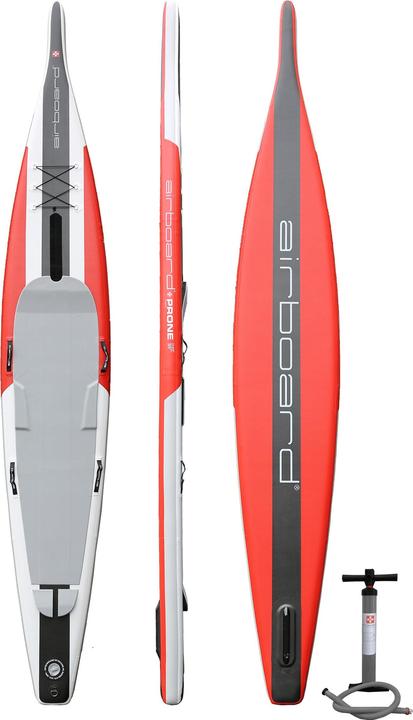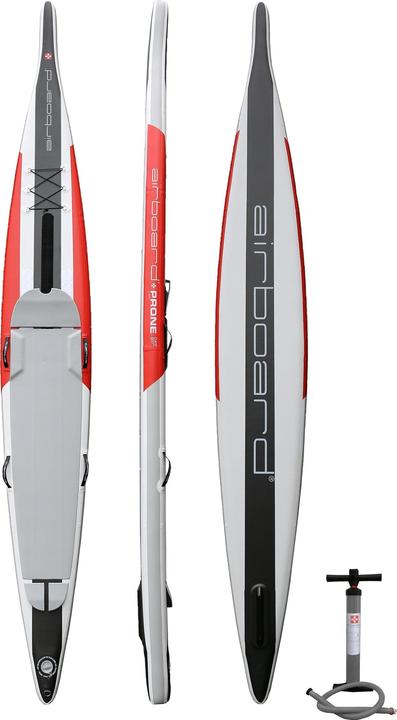
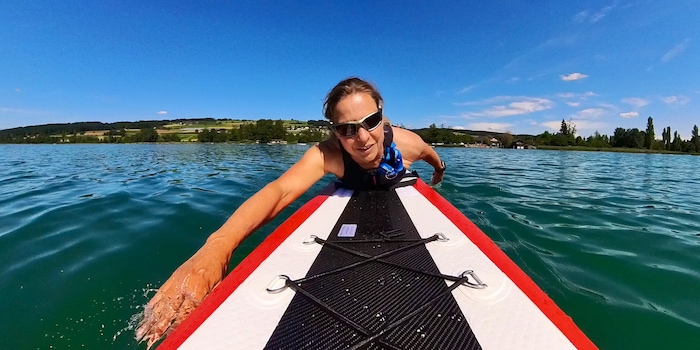
New boards bring variety to paddling
The Swiss SUP manufacturer Airboard has launched a new inflatable board on the market. You paddle on this board lying down. If you think this is for those who lack the balance to stand up, you're wrong.
If you've spent time on the coasts of California or Australia, you know them: The paddlers who lie prone on narrow boards and plough through the water with their hands. Lifeguards and surfers are also familiar with the sport of prone paddling.
The chance that you can watch prone paddlers on Swiss lakes or even try out the sport yourself has just increased. This is because the Swiss brand Airboard is offering three new inflatable models for paddling while lying down or kneeling.
The shape of the prone paddles differs from the prone paddles.
In terms of shape, prone paddleboards differ from stand-up paddleboards in that prone paddleboards are narrower and have a tapered shape and less volume, especially in the rear area, the tail.
Traditionally, prone boards are made from fibreglass with a foam core or from carbon. As a result, they take up around three and a half to four and a half metres of space for storage and transport. The inflatable board from Airboard can be rolled up to the size of a large rucksack, making the sport more accessible.
Depending on your body size and sporting ambitions, you can choose between the Airboard "Prone Hybrid", the "Prone Performance" and the "Prone Classic"
A first impression: light and well made
I received the "Prone Performance" airboard from the manufacturer in advance for a test. With a length of 14 feet (4.27 metres) and a width of 21 inches (53.3 centimetres), it corresponds to the dimensions of race SUPs used by lighter athletes in competitions. The Prone boards are also available in shorter, wider versions, but as a SUP racer, I have a weakness for fast, narrow boards.
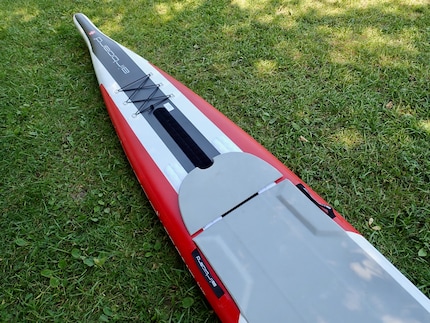
Source: Siri Schubert
My first impression: The board is well made and can be inflated up to 18 PSI (1.2 bar). This gives it the necessary stability to glide efficiently over the water. The carbon strip in the centre, the so-called stringer, increases the stiffness even further. The narrow nose, which is reminiscent of a dolphin's head, reduces the bow wave and thus the resistance. The board can be paddled lying down and kneeling.
Overall, I'm impressed with both the workmanship and the ease with which the board can be paddled. The fact that I can also use it as a SUP when I prefer to stand up from time to time is another advantage.
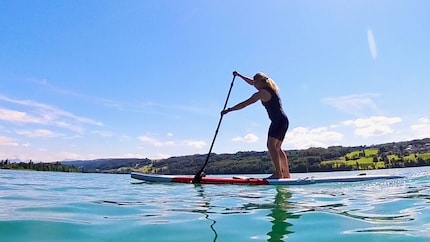
Source: Siri Schubert
Find out how the trend sport of prone paddling works and what you should look out for in this guide:
Research diver, outdoor guide and SUP instructor – I love being in, on and around water. Lakes, rivers and the ocean are my playgrounds. For a change of perspective, I look at the world from above while trail running or flying drones.
From the latest iPhone to the return of 80s fashion. The editorial team will help you make sense of it all.
Show all